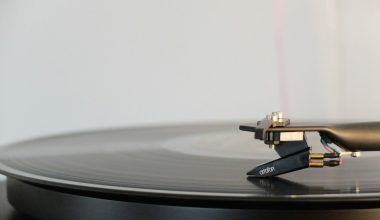If you’ve ever wondered how to get your music heard by a wider audience, learning how to nail your Spotify playlist pitch is an absolute must. Getting your tracks featured on playlists can elevate your exposure, grow your fan base, and even boost your music career. But how do you craft a pitch that captures attention? Don’t worry—this guide has you covered.
Why Spotify Playlists Matter
Spotify playlists are a game changer for artists. With millions of users turning to playlists for discovering new music, getting your song featured can mean increased streams and followers. Whether it’s an editorial playlist curated by Spotify’s team or a user-generated playlist with a dedicated following, the right placement can put your music in front of the right audience.
Think of playlists as the modern-day equivalent of radio airtime—but with more targeted reach. They help artists connect directly with listeners who are already interested in a specific genre or vibe. But to land that coveted spot, your Spotify playlist pitch needs to shine.
What Is a Spotify Playlist Pitch?
A Spotify playlist pitch is your chance to introduce your track to curators. Through Spotify for Artists, you can submit unreleased music to Spotify’s editorial team. This pitch is your opportunity to share the story behind your song, describe its mood, and explain why it deserves a spot on a playlist.
In addition to pitching directly through Spotify, many artists also reach out to independent playlist curators. These curators can include bloggers, influencers, or music enthusiasts who create popular playlists. A well-crafted pitch can open doors to these valuable connections, too.
How to Craft the Perfect Spotify Playlist Pitch
When it comes to pitching, details matter. Here’s how to make your submission stand out:
1. Start with a Compelling Story
Curators want more than just great music—they want to know the story behind it. What inspired the song? Is there a personal journey or unique message tied to it? Sharing these details can create an emotional connection.
For example, if your track was inspired by a life-changing event, mention it. If it’s tied to a cultural movement or addresses a timely issue, highlight that as well. A compelling story makes your pitch memorable.
2. Describe the Mood and Genre Accurately
Spotify’s algorithm and human curators rely on accurate information to match your track to the right playlist. Be clear about your song’s genre, mood, and tempo. Is it a chill acoustic track perfect for relaxing evenings, or an upbeat dance anthem that fits a party playlist?
Use descriptive language that paints a picture. Words like “emotional,” “energetic,” or “atmospheric” help curators understand where your music fits.
3. Highlight Unique Elements
What sets your track apart? Maybe it features a rare instrument, an unexpected beat drop, or a catchy hook. Mention these standout elements to make your pitch more engaging. The more unique your song, the more likely it is to grab attention.
4. Personalize Your Pitch
If you’re reaching out to independent curators, do your research. Address them by name and mention why their playlist is a good fit for your track. Generic messages are easy to ignore, so make your pitch feel personal.
For example: “Hi [Name], I’ve been a fan of your playlist [Playlist Name] for a while now. My latest track, [Track Name], aligns with the [specific mood or vibe] of your playlist, and I think your audience would enjoy it.”
Tips for Submitting to Spotify’s Editorial Team
Spotify’s editorial team receives thousands of submissions daily, so standing out is crucial. Follow these tips to improve your chances:
Be Early
Submit your track at least a week before its release date. This gives curators enough time to review your pitch. Early submissions also increase your chances of being featured on Release Radar, a playlist that showcases new music.
Fill Out All Details
Don’t skip any sections of the submission form. The more information you provide, the better Spotify’s team can understand your music. Include tags for mood, genre, and instruments, and don’t forget to mention the language of your lyrics.
Keep It Professional
While it’s important to show personality, avoid sounding overly casual. Your pitch should be clear, concise, and professional. Avoid long-winded explanations or irrelevant details.
The Role of Networking in Playlist Placements
Networking is an often-overlooked part of the pitching process. Building relationships with playlist curators, fellow musicians, and industry professionals can open doors to more opportunities. Here’s how to get started:
Follow playlist curators and engage with their content. Like, comment, and share their posts to build rapport. When you eventually reach out with your pitch, they’re more likely to recognize your name.
Attend Industry Events
Whether it’s a music conference or a local gig, industry events are a great place to meet curators in person. A face-to-face conversation can leave a lasting impression and make your pitch more memorable.
Collaborate with Other Artists
Collaborations can expand your reach and increase your chances of being noticed. Partnering with an artist who’s already featured on playlists can introduce your music to new curators and audiences.
Common Mistakes to Avoid
Even the best tracks can be overlooked if your pitch has missteps. Here are some common mistakes to watch out for:
Being Vague
Curators need specific information to make decisions. Avoid vague descriptions like “It’s a good song” or “It fits all playlists.” Instead, explain exactly why your track stands out.
Overloading Your Pitch
Keep your message concise. While it’s important to include key details, too much information can overwhelm the reader. Stick to the essentials and make every word count.
Ignoring Submission Guidelines
Different curators have different requirements. Ignoring these guidelines can lead to your pitch being rejected outright. Always read and follow the instructions carefully.
Measuring Success
Once you’ve submitted your pitch, it’s important to track the results. Monitor your Spotify for Artists dashboard to see if your track has been added to playlists. Pay attention to your streams, saves, and follower count as well.
If your pitch doesn’t land the first time, don’t get discouraged. Use the experience to refine your approach and try again. Remember, persistence pays off.
Final Thoughts
Crafting a great Spotify playlist pitch takes time and effort, but the rewards are worth it. By sharing your story, highlighting your song’s unique qualities, and building relationships with curators, you can increase your chances of being featured. Whether you’re submitting to Spotify’s editorial team or independent playlist curators, a well-crafted pitch can open doors to exciting opportunities.
Start working on your Spotify playlist pitch today, and who knows? Your track might just become the next big hit.
For further reading, explore these related articles:
- Exploring the Most Iconic Songs That Have Made History
- Dino Seventeen: The Talented Maknae Who’s Winning Hearts Everywhere
For additional resources on music marketing and distribution, visit Deliver My Tune.






